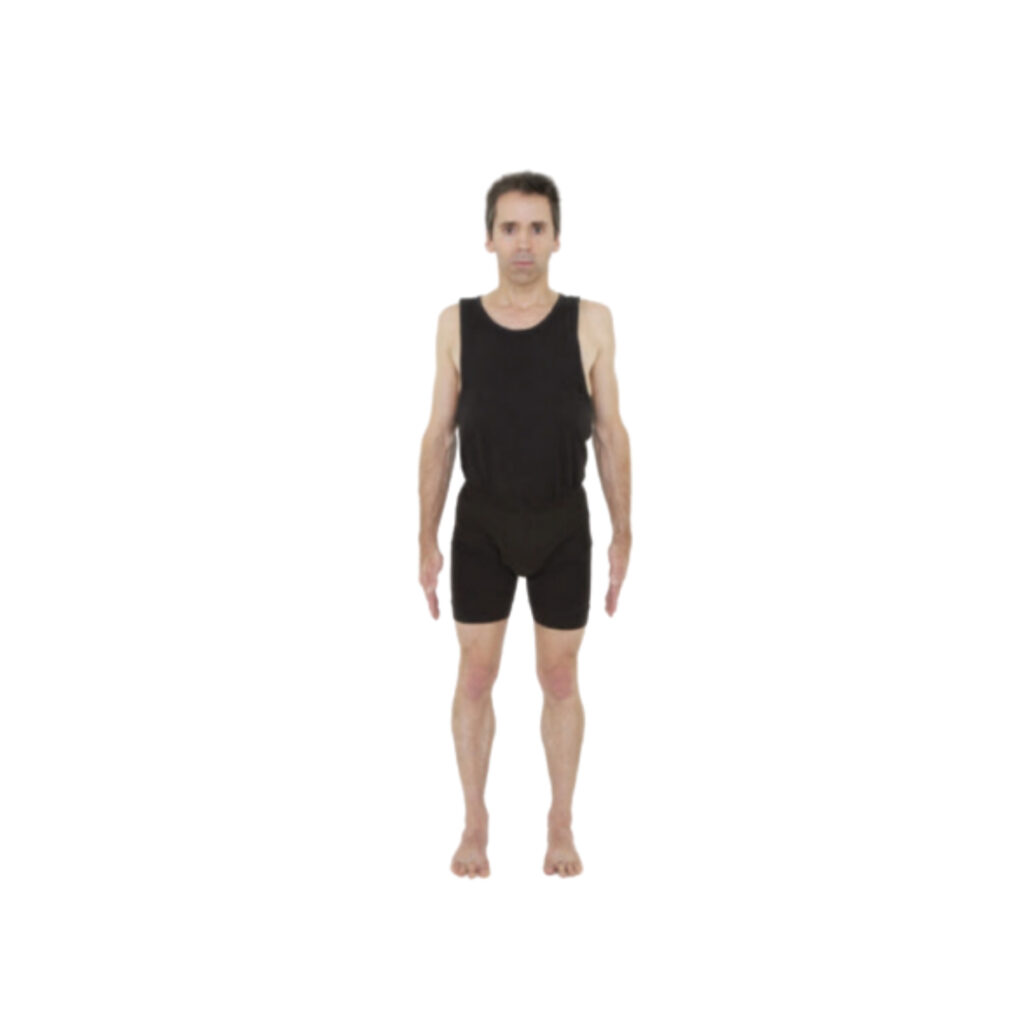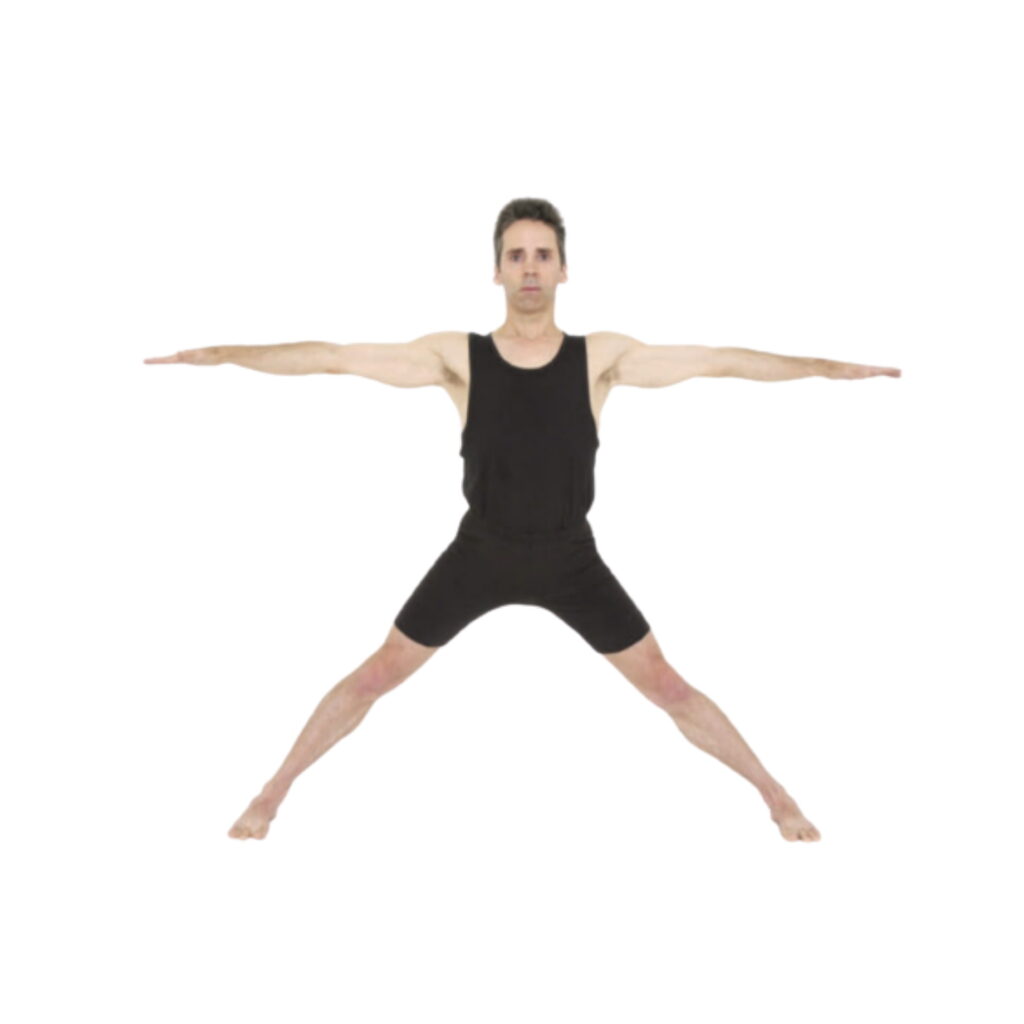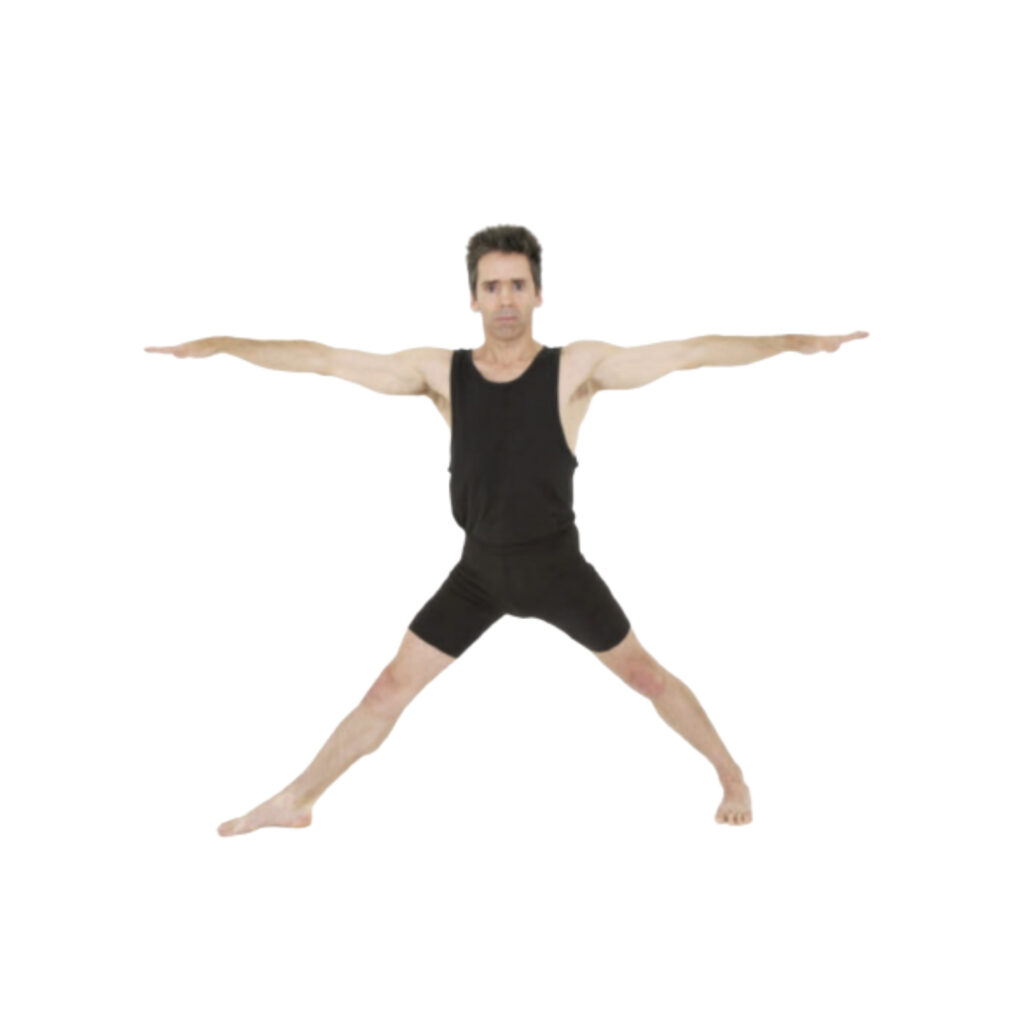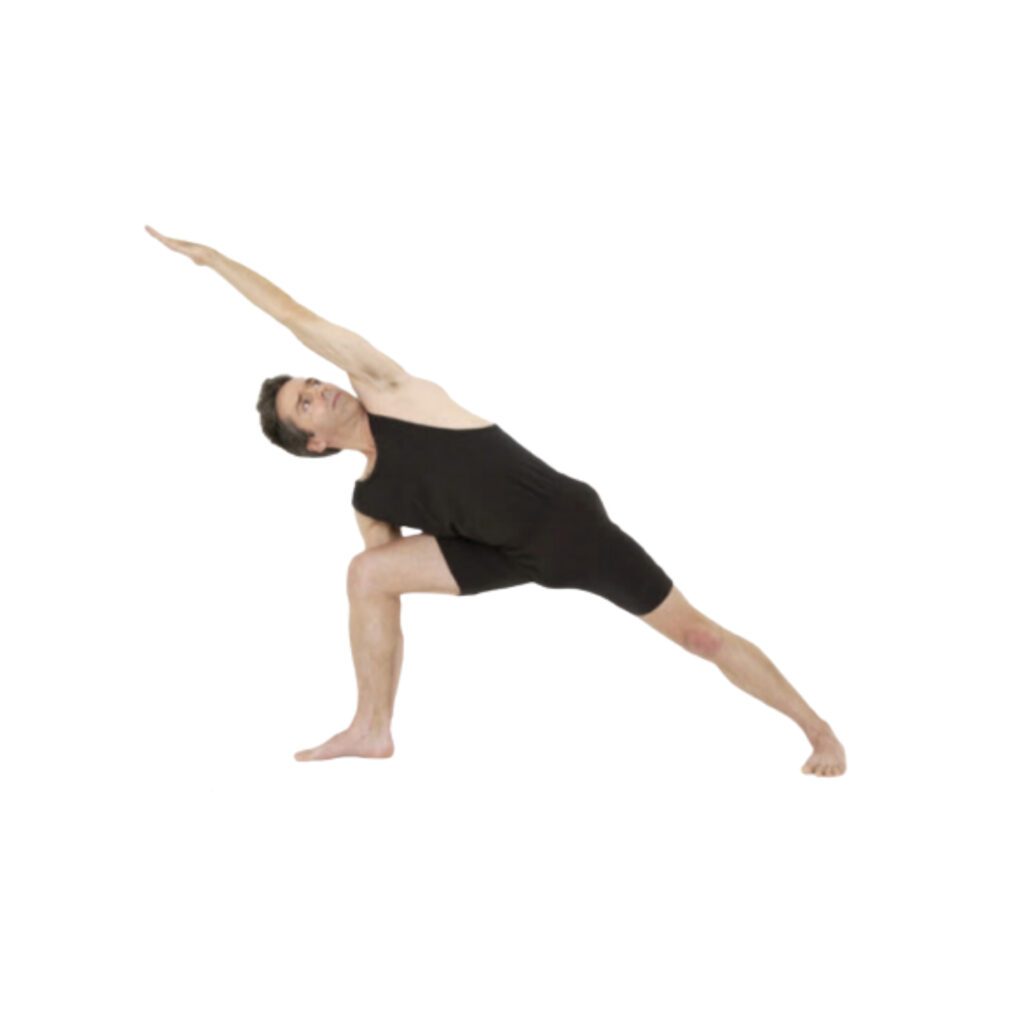Extended Side Angle pose (Utthita Parsva konasana) is one of those weapons in the yoga arsenal that helps fight almost any battle of pain and disease while preparing your body and making it stronger. Use this blessing wisely.
This asana helps to stretch the parts of the body that are not usually extended. This is a starting posture, which helps you get accustomed to body stretching and intercourse for yoga.
The Extended Side Angle pose (Utthita Parsva konasana) is designed to help stretch parts of the body that are not usually extended. This is a starting (beginner level pose, and it is highly advisable to do it on an empty stomach in the morning. The asana is both therapeutic and challenging, a truly beautiful asana that comes with a lot of benefits.
Information
| Known as: | Extended Side Angle, Warrior Angle, Utthita Parsva konasana, Virabhadra Konasana |
| Sanskrit Name: | उत्थित पार्श्वकोणासन |
| IAST: | utthita pārśva koṇāsana |
| Pronunciation: | oo-TEE-tah parsh-vah cone-AHS-anna |
| Total time: | 30–60 seconds |
| Type: | Balance, Side bend, Standing |
| Level: | Beginner |
| Drishti: | Upward; Forward; At the floor |
| Indications: | Leg, Knee, Ankle, Abdomen, Lung, Shoulder, Thorax, Vertebral column, Inguinal region |
| Focus: | Legs, knee, ankles, groin, chest, lungs, shoulders, spine |
| Chakras: | Anahata Chakra (Heart Chakra), Svadisthana Chakra (Sacral Chakra), Muladhara Chakra (Root Chakra) |
| Ayurveda (Doshas): | Vata, Pitta, and Kapha |
| Elements: | Water, Earth, Air |
| Counterposes: | Downward Facing Dog Pose (Adho Mukha Svanasana), Viparita Virabhadrasana (Reverse Warrior Pose), Pyramid Pose (Parsvottanasana), Uttanasana (Standing Forward Bend Pose) |
| Preparatory poses: | Triangle Pose (Trikonasana), Warrior II (Virabhadrasana II), Bound Angle Pose (Baddha Konasana), Low Lunge (Anjaneyasana) |
| Follow-up poses: | Revolved Triangle Pose (Parivrtta Trikonasana), Extended Triangle Pose (Utthita Trikonasana), Tree Pose (Vrksasana), Seated Forward Fold Pose (Paschimottanasana) |
| Contraindications: | Knee injury, neck injury, hip injury, high blood pressure, or low blood pressure (keep fingertips upward, toward the ceiling), pregnancy |
Meaning
Utthita Parsva Konasana is a Sanskrit name that is made up of four words – Utthita + Parsva + Kona + Asana:
- “Utthita“= “extended” or “stretched”
- “Parsva” = “side” or “flank”
- “Kona” = “angle”
- “Asana” = “pose” or “posture”
So, the meaning of Utthita Parsva Konasana is “Extended Side Angle Pose”. The name reflects the shape of the body in the pose, with one leg extended to the side and the torso reaching towards the other leg at an angle.
In yoga philosophy, each pose is believed to have physical, mental, and spiritual benefits. Utthita Parsva Konasana is thought to help release tension in the hips, legs, and spine, while also opening the chest and shoulders to promote better breathing and circulation. It’s also believed to cultivate mental focus and concentration, and promote a sense of groundedness and stability.
Benefits of Extended Side Angle (Utthita Parsva konasana)
Utthita Parsva konasana strengthens and stretches the legs, hips, and hamstrings. It also opens the chest and shoulders, which can be beneficial if you have any kind of stiffness in your shoulders or back. The extended side angle pose is also a great side body stretch.
The amazing Physical Benefits and Mental Benefits of Utthita Parsvakonasana:
Physical Benefits
- Strengthens the ankles, calves, knees, and thighs
- Relieves symptoms of sciatica
- Opens the hips and groin
- Increases lung capacity
- Alleviates symptoms of arthritis
- Lengthens the spine
- Improves digestion
Mental Benefits
- Builds focus
- Develops willpower
- Stimulates the mind
- Reduces stress
Science behind
This pose reiterates the fact that there is a continuum between the poses. This is a natural progression from Warrior Pose II. Warrior II is preparing to spear, and in this posture the spear throwing action takes place.
In Warrior Pose II (Veerabhadrasana II) there is a progression of lateral flexing from a pillar to the elongated lateral embossing. In the Warrior pose, the back arm extends away from the body, and in this pose it extends above the head.
When you combine arm and shoulder action in this pose, the back leg anchoring is in the ground, this creates a stretch for the upper body. But the real story of this posture is breathing. To breathe, you should use the supporting muscles of deep breathing while opening your chest and exhaling.
Step-by-step Instructions of Extended Side Angle (Utthita Parsva konasana)
To warm up the muscles, start with about 6 rounds (3 pairs) of Surya Namaskar (Sun salutation) keeping the breathing in mind.
You can start facing the long path on the mat at Mountain Pose (Tadasana).
Step 1

After Surya Namaskar, come to Mountain pose (Tadasana) and relax the body by extending the spine and exhaling the chest, bring the breath under control and relax.
Step 2

Step your feet wide apart. Inhale and extend your arms out to the side. Ideally, your ankles should be under your wrists.
Step 3
Turn your left foot in slightly and turn your right leg out directly to the side.

Tip:
- Align your right heel with the arch of the left foot.
- Engage your leg muscles to the bone and draw the muscles from the floor up into your pelvis.
Step 4
Exhale, bend your right knee to 90 degrees, and place your right fingertips on the outside edge of your right ankle. Place your left hand on your hip. Take your hips and thighs back, widen your sitting bones apart, and widen the pelvic floor. Keep the space between your sitting bones and root your tailbone down, extending from your pelvis down through your feet. Extend your left arm over your left ear and look up under the arm.

Tip:
- Keep your left thigh back.
- Keep your thigh parallel to the floor.
Step 5
Hold for several breaths, then pull your legs toward each other, inhale, and come up. Repeat on the other side.
Variations and Modifications of Extended Side Angle (Utthita Parsva konasana)
Gentle Variation

Follow steps 1 through 5 except rest your elbow on your knee rather than taking the fingers to the floor.
Partnerships
A partner can help you get a feel for the back foot work in this posture. Perform step 1 in the main description of this posture.
- Stand your partner on your back foot, face you, and tie a strap around the inside of your back (he can also cut off the heel of your back from inside one leg).
- As you bend the front knee, your partner should pull the strap firmly against the inner waist, this is the opposite of the motion of the front leg.
- Then, as you bend toward the bent knee, it should keep pulling on the leash, helping keep your foot on the back foot and heel.
Modifications
Practicing Extended Side Angle (Utthita Parsva konasana) will strengthen and stretch your entire body. This pose is a good way of preparing for a deep yoga practice, but it can sometimes be difficult for beginners to find balance and correct alignment.
Try these simple modifications to find the variation of currency that works for you:
- If it is difficult to put your back heel on the floor, then practice with your back heel against the wall. When you bend your front knee in the pose, imagine that you are pushing the wall with your heel.
- If your front fingers do not reach the floor, you can either place your hand on a yoga block or bring your thigh over your front thigh. Make sure your torso does not fall forward. Make adjustments that you need to align your chest, hips, and legs.
- If your hips are too tight, shorten your stance and straighten your front leg to an extent that is comfortable as you work on gaining flexibility.
- If your hips are very flexible, make sure your front calf is standing. To ensure that your knees do not extend beyond your ankle, widen your stance.
Contraindications of Extended Side Angle (Utthita Parsva konasana)
Always work within your own limits and abilities. If you have any medical concerns, talk to your doctor before practicing yoga.
Someone suffering from high blood pressure should not attempt this pose until they have mastered most poses with balance, which is less difficult. The movement of the neck and eyes in this posture can bring discomfort to those suffering from high blood pressure.
Someone with migraines may find it difficult to have head and neck movements. It is necessary to improve the conditions of migraine with pranayama before attempting this mudra practice.
Not for the people with a weak nervous system or weak joints. Pressure on the joints can make the pose incomplete and if done incorrectly, the joints can also get hurt.
Injured hips or injured feet cannot support while practicing this pose, so it is best avoided.
Bottom line
If you are looking for a great side stretch, look no further than the extended side angle pose in yoga, also known as Utthita Parsva konasana (उत्थित पार्श्वकोणासन) in Sanskrit. Not only does it stretch the edge of your torso, but it also extends the edge of your feet, and it also gives you a deeper stretch in your waist.
How does this all work? As you bend deeply into your front foot, the lateral coronary makes a long side angle from the heel of your back to the tips of the fingers. It is a starting pose for great leg-poses for opening the hips, and is most often found in the Warrior Vinayasa flow sequences. This is how to get it done and perform appropriately.














